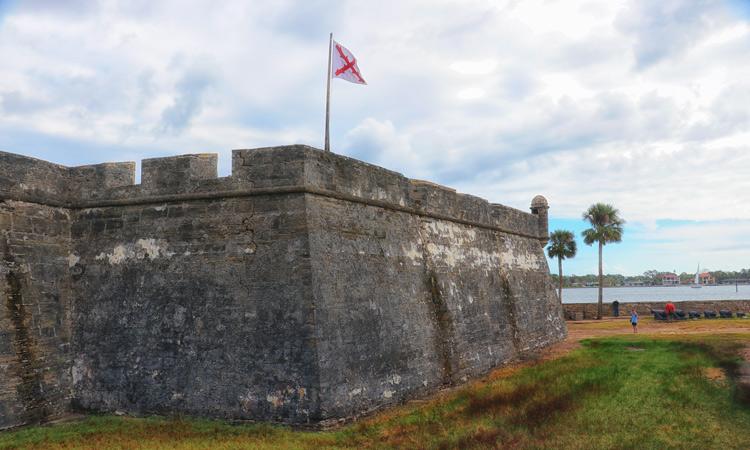Military history sites make for one of the best places to explore during a weekend getaway. St. Augustine delivers even better when you combine America's oldest masonry fortification with championship golf, award-winning distilleries, world-class fishing, and palm-tree-lined beaches that create the perfect backdrop for an unforgettable trip.
What Do You Call Your "Guys Trips"?
- Stay at the World Golf Village Renaissance Resort - strategically positioned between historic downtown and championship golf courses, offering the perfect base for exploring both worlds
- Experience authentic military history - witness live cannon firing demonstrations and explore 350+ years of fortress history through interactive exhibits and costumed interpreters
- Discover America's golf heritage - visit the site of Florida's first golf course, located right on the fort grounds in 1902, then play modern championship courses nearby
- Explore within walking distance - access craft distilleries, breweries, and historic attractions all within steps of the fortress walls
- Take home authentic Spanish colonial craftsmanship - discover handcrafted items and military memorabilia that represent the unique heritage of America's oldest continuously inhabited city
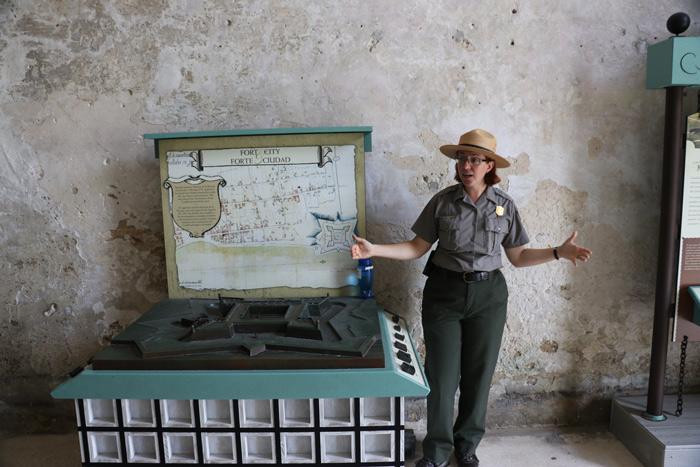
Castillo de San Marcos: America's Oldest Masonry Fortress
Florida guys trips reach their ultimate destination when combining military history with the recreational activities that make St. Augustine, Florida a premier travel destination. Castillo de San Marcos preserves the oldest masonry fortification in the continental United States, constructed between 1672 and 1695 to protect Spanish claims in the New World. Only Castillo San Felipe del Morro in San Juan, Puerto Rico predates this fortress, making the St. Augustine installation the oldest of its kind on the American mainland.
Located just outside the "old city," this star-shaped fortress welcomes approximately 500,000 visitors annually who come to experience over 350 years of American military history. Built from coquina - a unique mixture of broken shells and sand found only in select coastal regions - the fort's walls proved impenetrable to enemy attack and fire-resistant during multiple sieges.
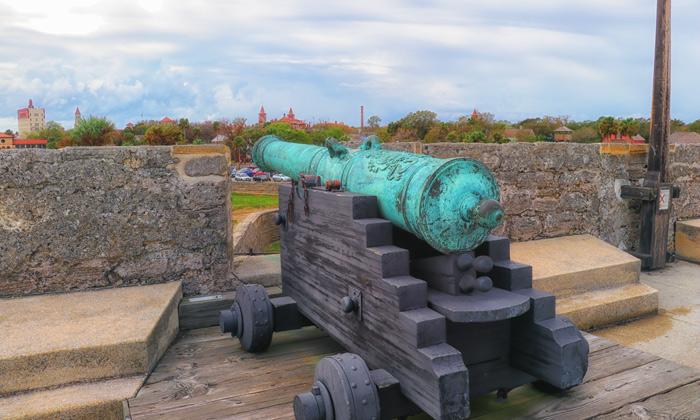
Construction began in 1672, spanning 23 years to create a fortress designed to protect the city from British privateers and provide permanent military presence to safeguard Spanish treasure ships sailing north following the Gulf Stream. The large interior area originally allowed people from the town to gather in safety - along with livestock - during pirate raids, but later the walls were widened to accommodate heavier cannons.
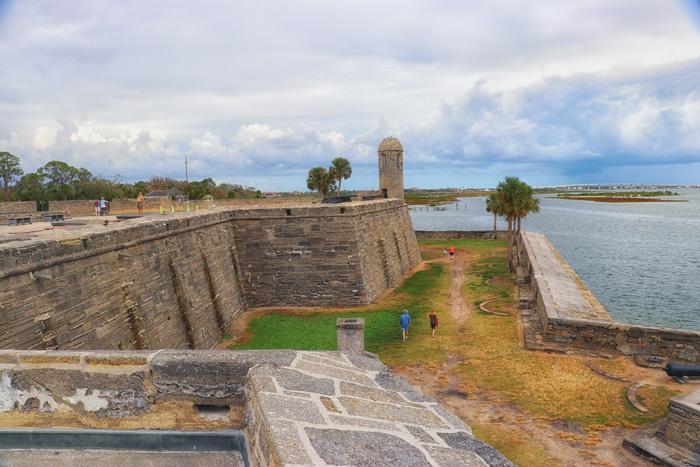
Over the next several hundred years, the fort housed British troops while St. Augustine served as the capital of British East Florida from 1763-1783, until it returned to Spain. In 1819 it became part of the United States, then briefly served as a Confederate fort in 1861 before Union forces captured it in 1862 after it was abandoned. The fortress continued as a United States military installation through the Spanish-American War and various Indian wars until 1933 when it transferred to the National Park Service.
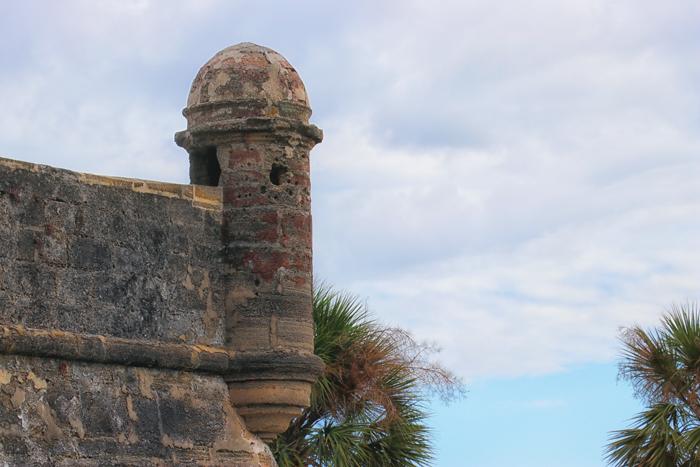
Planning Your Visit to America's Oldest Fort
The fort operates daily from 9 a.m. to 5 p.m., except Thanksgiving and Christmas Day, with admission costing $15 for adults 16 and older while children 15 and younger enter free. The fortress maintains a capacity limit of 350 visitors, with tickets valid for seven consecutive days.
Parking costs $2.50 per hour at the adjacent lot, with alternative parking available at the Historic Downtown Parking Facility within a 10-minute walk. The first admission begins at 8:45 a.m., with the last entry at 5:00 p.m.
Military History Comes Alive Through Interactive Experiences
Several days each week, visitors experience reenactments by costumed historians, cannon firings, weaponry demonstrations, and interactive activities that bring the fort's history to life. The cannon firing ceremony runs approximately 20 to 30 minutes and ranks as one of the most popular attractions, with staff and volunteers dressed in period costumes creating an authentic experience.
Park rangers offer educational talks throughout the day, sharing knowledge about the fort's role in colonial America and the fascinating conversations and tales that must have been discussed while standing on the walls looking out over the bay. A twenty-five-minute video showcases the fortress's history along with cannon and musket firing sequences, shown every half hour.
The fort's interior courtyard provides access to historic storerooms featuring exhibits that chronicle different chapters of the fortress's long service under Spanish, British, and American flags. The gun deck offers spectacular views of Matanzas Bay and the historic city, making it perfect for those guys weekend photo opportunities.
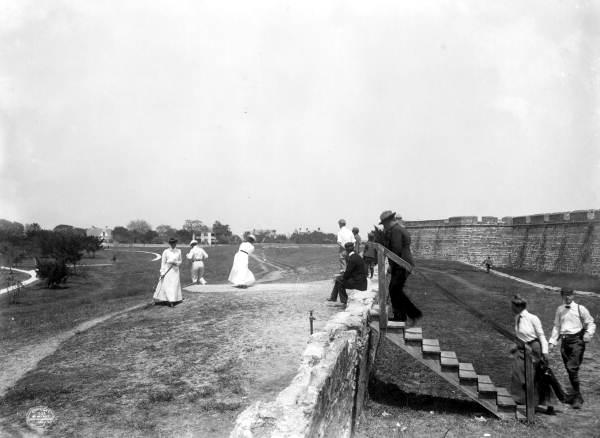
Where Golf History Began in Florida
However, like everything in St. Augustine, things tend to circle back from history to golf - and that's not a modern trend. Florida's first formal golf club was established in St. Augustine in 1895, with the St. Augustine Golf Club expanding to a 9-hole course with sand greens near Fort Marion (the United States military designation for Castillo de San Marcos) by 1902. Historic photographs from this era show golfers playing in the shadow of the fortress walls, creating a unique visual connection between America's military heritage and the early development of golf in Florida.
This distinctive relationship between military history and golf makes St. Augustine perfect for combining historical exploration with world-class golf. Today, championship courses like World Golf Village feature layouts designed with input from legends "Slammin'" Sammy Snead and Gene "The Squire" Sarazen, while St. Johns Golf Club attracts around 60,000 rounds annually on its challenging layout just minutes from the historic district.
Nearby Attractions Within Walking Distance
The Colonial Quarter, located steps from the fortress, transports visitors to 17th-century life with blacksmith demonstrations, musket drills, and a 55-foot Caravel Ship under construction. St. George Street serves as the city's central pedestrian thoroughfare, featuring boutiques, historic sites like the Oldest Wooden School House, and hidden gems like Rendezvous Imported Beers with over 100 craft beer selections.
The St. Augustine Pirate & Treasure Museum sits directly across from the fort, featuring 48 interactive exhibits and the largest authentic collection of pirate artifacts, complete with a replicated pirate ship. For those interested in local legends, the Fountain of Youth Archaeological ParkFountain of Youth Archaeological Park provides another unique historical experience, claimed to be the landing site of Ponce de León and home to the legendary spring.
St. Augustine Distillery offers free tours and tastings just a short walk from the fortress, where visitors learn the farm-to-bottle process of crafting bourbon and rum. Multiple craft breweries within the historic district provide perfect spots for post-fortress exploration, offering everything from traditional ales to innovative seasonal brews.
St. Augustine: A Perfect Mix of History and Adventure
Whether you're looking to explore military history or include this as part of your St. Augustine golf mancation, a visit to Castillo de San Marcos should absolutely be part of your trip. The fortress serves as more than a simple historical site - it represents the centerpiece for a destination that seamlessly blends America's colonial heritage with modern attractions.
From experiencing authentic cannon fire on the ramparts to discovering where Florida's golf history began, St. Augustine provides experiences that create lasting memories. The combination of military history, nearby golf courses, craft beverage options, and walkable attractions makes this destination ideal for weekend getaways or extended adventures.
Unexpected Recommendation: Visit during the evening hours just before closing to experience the fortress in golden hour lighting - the coquina stone walls glow magnificently during sunset, creating dramatic photography opportunities while crowds thin out, allowing for a more contemplative experience of this remarkable piece of American history.
